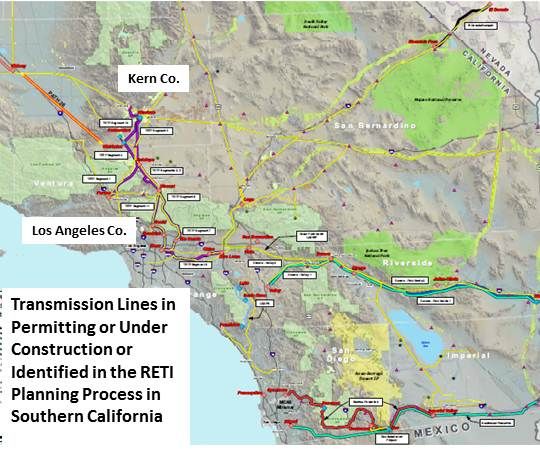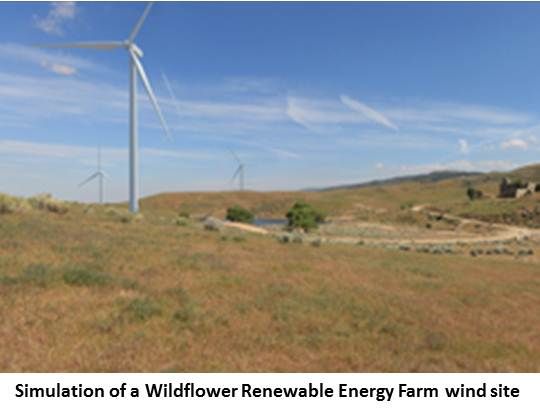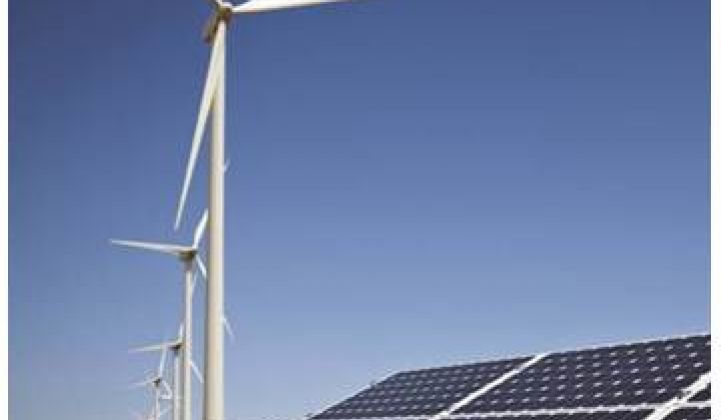Element Power’s proposed Wildflower Renewable Energy Farm, which would be composed of 150 megawatts of wind and 100 megawatts of solar, got dealt a significant setback on January 24 when the Los Angeles County Board of Supervisors unanimously rejected the company’s application for new meteorological (met) towers.
Without met tower data, Element Power is unlikely to be able to obtain financing to proceed.
Across Antelope Valley on the southern slopes of the Tehachapi Mountains, enXco’s Pacific Wind-Catalina Solar project, fully permitted by Kern County, has begun construction. Pacific Wind will be 140 megawatts and Catalina Solar will be 110 megawatts. Conceived separately but almost immediately adjacent to one another, the installations will share a transmission gen-tie and facilities at the point of interconnection, according to enXco Vice President for Southwestern Region Development Mark Tholke. It will be, Tholke said, a “world-class solar-wind hybrid.”
The project is positioned to take advantage of the new Whirlwind substation that Southern California Edison (SCE) is building as part of the Tehachapi Renewable Transmission Project (TRTP) for thousands of new wind and solar megawatts. The high desert has one of the country’s richest wind resources and is also “great for solar,” Tholke said. “The insolation is strong and it’s a little cooler because we have some elevation.”
Though California’s transmission system operator has advanced its management of variability, Tholke explained, a hybrid project makes the task somewhat simpler because, he said, studies show that wind and solar generate at different times. “Wind,” Tholke said, “might feed the transmission system 30 percent to 40 percent of the time. When you layer in the solar, that puts more power onto those same lines.”

Solar-wind hybrids are not uncommon in backyard setups in the U.S. and around the world. Where there is no grid service or in locations where someone wants to minimize grid reliance, a combination of solar panels and a small wind turbine may capitalize on local resources.
According to China state news agency Xinhua, North China Grid Co., a subsidiary of State Grid Corp, China's biggest transmission operator, recently brought on-line a 140-megawatt wind-solar hybrid project composed of 100 megawatts of wind and 40 megawatts of PV solar. It may be the only generating full-size, utility-scale, solar-wind hybrid project in the world. Described as a “demonstration project” in Hebei Province, the project reportedly also incorporates a 20-megawatt battery storage capability.
There are small utility-scale U.S. experiments combining solar and wind around the country. The first and most widely known is Western Wind’s “fully integrated” 10.5-megawatt system in Arizona. It is composed of five two-megawatt Gamesa turbines and a 500-kilowatt Suntech crystalline photovoltaic solar array. A number of developers have announced plans to retrofit solar energy systems immediately adjacent to producing wind projects to test their grid operators’ capability to integrate the two.
There is nothing in the U.S. on the scale of the enXco undertaking. It will use 70 two-megawatt REPower turbines and it will be the biggest Solar Frontier copper indium gallium diselenide (CIGS) PV installation in the world. EnXco has long aspired to build a hybrid project, Tholke said, to show how effective it can be to feed the grid with both resources. The physical proximity of Pacific Wind and Catalina Solar offered the opportunity.
EnXco has other hybrid projects in various stages of development, and, Tholke said, the company remains interested in the concept’s potential. Building this one has taught them much. “There are lessons learned along the way,” he said. “It would have, for instance, been more efficient if we had figured out the mechanics of how to share the gen-tie earlier.”
EnXco did not encounter the kind of local opposition that waylaid Element Power. That is partially due to a tradition of energy development in Kern County that goes back to its days as an oil center. Another reason was what Tholke called “a robust outreach to landowners in the vicinity.” Finally, Tholke noted, the wind-solar project involved “over 300 landowners” and therefore offered a lot of people a personal interest in seeing it go forward.

In the Supervisors’ decision against Element Power, NextEra Energy was also denied new met tower permits for its proposed 200-megawatt Blue Sky project. Local opponents of Wildflower and Blue Sky regarded the Board’s rejection of the met tower applications as a vindication of their ecological concerns.
NextEra Energy’s response to the decision carried a different implication. “Our current focus is on projects further along in our pipeline and executing our 2012 wind development program,” noted NextEra Director of Communications Steven Stengel.
NextEra is the leading U.S. wind developer. The vital production tax credit (PTC) that gives the wind industry a fighting chance to compete with the heavily subsidized oil, natural gas and coal industries may not be extended this year by a gridlocked Congress. U.S. developers are scrambling to get every turbine they can into the ground before the PTC expires on December 31.
Element Power declined to comment on the Board’s decision but is in essentially the same position.
The companies are not as concerned with their opponents in Los Angeles County right now as they are with getting turbines built before the end of the year. And the Supervisors will be more inclined to grant their met tower permits after being re-elected in November, when Governor Brown’s favor will supersede voter sentiment. In the interim, neither developer will forget the rich resources, available transmission and huge nearby demand centers that have been seized on by enXco.



